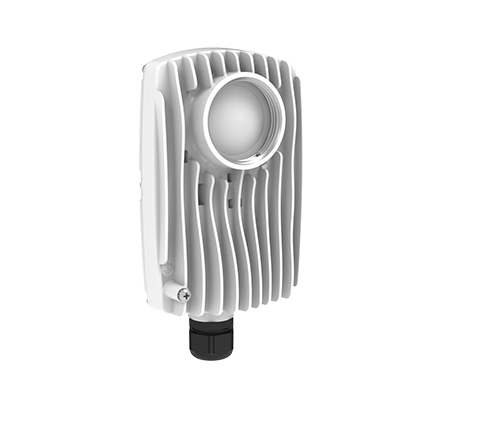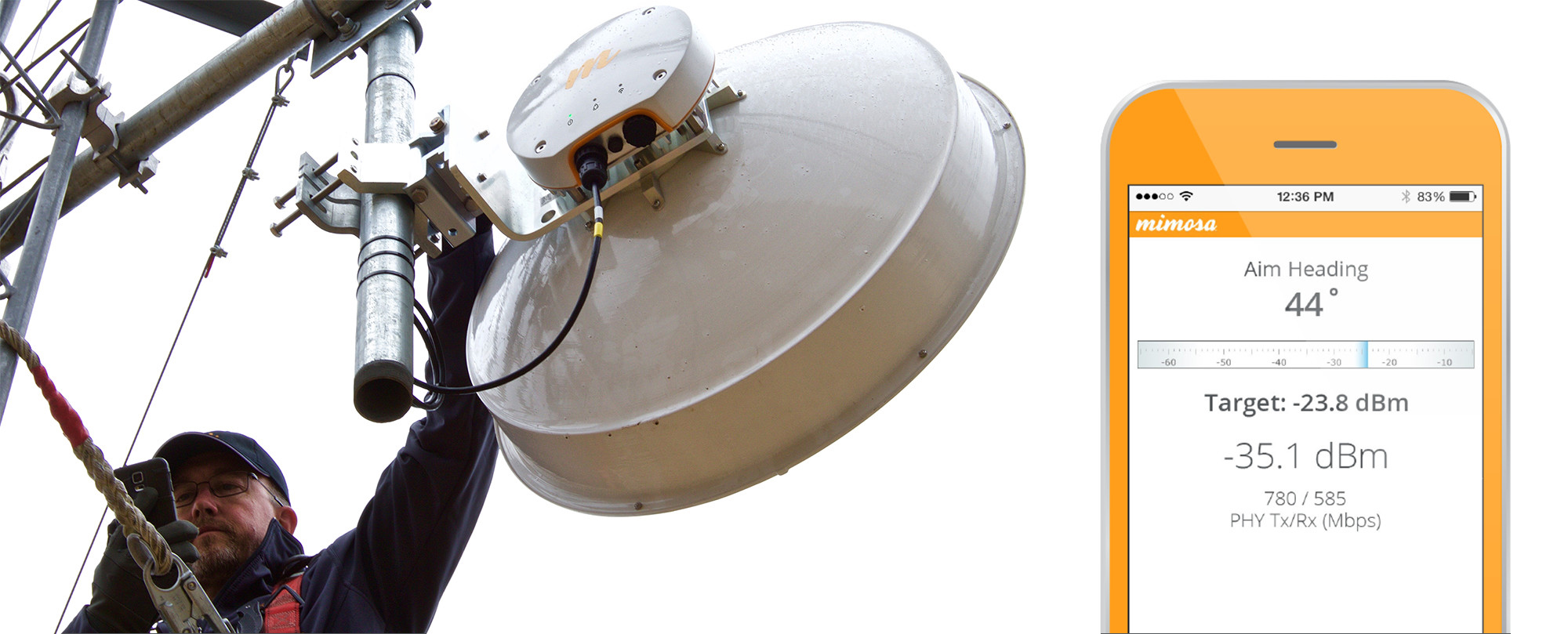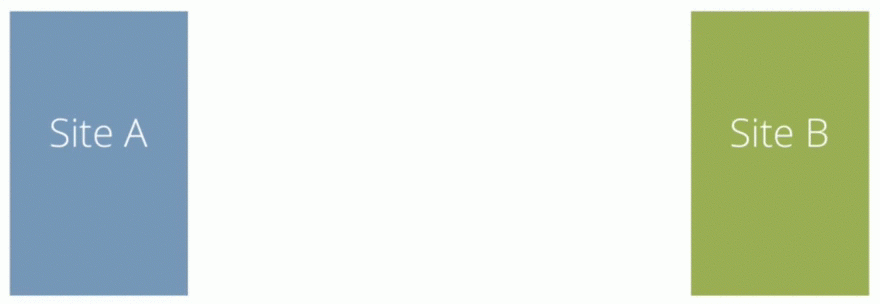Experience the perfect balance of performance and price with the new Mimosa C6x Lite Edition — built for today, ready for tomorrow.

The broad availability of unlicensed spectrum for outdoor use has fostered the growth of wireless service providers offering services that are competitive with legacy fixed wireline services. But the reliability of a wireless network can be threatened by the shared nature of unlicensed spectrum. The explosion of Wi-Fi capable end user devices that operate in the same 5 GHz spectrum that is used by WISP and enterprise users, plus the proliferation of other WISP users with similarly high-power outdoor products, presents challenges in ensuring network performance and uptime.
To improve reliability and meet growing network capacity demands, WISPs are now increasingly looking beyond the 5 GHz band, hoping to protect their links with dedicated licensed spectrum.
Licensed radio equipment has not enjoyed the same downward price trend or market growth as seen with unlicensed equipment, stemming from costly legacy microwave silicon technology and custom RF components. This means that a licensed point-to-point link could be 15 to 20 times more expensive than the price of deploying an unlicensed link. The affordability of unlicensed products is driven by the use of silicon that is specialized for wireless applications and ships in much higher volume, given it’s generally available to a number of manufacturers for different applications.
Mimosa wanted to take advantage of the cost benefits of standards-based 802.11ac silicon, but with the ability to customize for high performance in an outdoor environment. To achieve this, Mimosa partnered with Quantenna Communications, the first to market with 802.11ac 4X4 MU-MIMO capable silicon. Unlike typical Wi-Fi chip solutions, the relationship with Quantenna is unique as Mimosa has complete control of the chip, allowing for design of high precision outdoor wireless applications. Mimosa started with affordability and speed, and then completely customized the MAC layer of our solution to add features such as TDMA and GPS synchronization that improve link reliability and efficient use of the spectrum.
Earlier this year, Mimosa started shipping our first licensed product, the B11 backhaul radio. This product is designed for high capacity point-to-point links using the 11 GHz licensed spectrum, which runs from 10.7 GHz to 11.7 GHz. The B11 backhaul was recently recognized as Product of the Year by the Wireless ISP Association. Why did we win this award? We won because the B11 disrupts age-old microwave industry perceptions by being simple to deploy, adaptable to modern bandwidth demands, and extremely cost-effective.
For many 11 GHz radios, customers are required to order a separate product number depending on the part of the band being licensed. The B11 backhaul radio supports the entire 11 GHz band in a single product, meaning you can safely order the B11 and know you won’t get stuck with the wrong version. In addition, ISPs love the B11 because it mounts directly to a wide range of 11 GHz dishes from many suppliers, giving the flexibility to choose an appropriate sized dish based on the characteristics of the link. Direct mount to the dish eliminates the need to use expensive external diplexers and 11 GHz-rated Type N RF cables. With copper Ethernet and an SFP port, you have the flexibility to choose to run both power and data over Ethernet, or to power the device over Ethernet and use fiber for data. This is a useful option when deploying on large towers with cable runs that exceed the limits for Ethernet, or where interferers like FM radio transmitters impair the operation of Ethernet. The B11 also includes a convenient 2.4 GHz management interface, allowing the installer to configure and fine tune the antenna alignment right from their smartphone.

Mimosa also makes it easier than ever to understand deployment options. Our free design tool provides access to the entire FCC database of 11 GHz licensed links in the US, allowing ISPs to visualize links. With one simple click, you can submit a coordination request to our licensed coordination partner Intelpath, providing a quick and free pre-coordination to be performed, prior to submission to the FCC. As an added bonus, we’ve also mapped all 6, 7, 13, 18 and 23 GHz licensed links in our design tool for use in network planning.
The Part 101 licensing process has its origins in the use of licensed frequencies for voice communications. The characteristics of voice traffic is symmetrical in nature. Of course, the original Part 101 rules did not envision a world where Netflix and YouTube would drastically skew data services to more demand for traffic being in a downstream direction, towards the user.
In a legacy FDD (Frequency Division Duplexing) 11 GHz radio two channels are licensed, a transmit and receive from either site. These channels are of equal size, up to 80 MHz wide and 490 MHz apart. The radios simultaneously transmit and receive on both channels. By definition, they can only ever achieve a 50/50 split of downstream to upstream, which is an inefficient use of frequency as it will usually result in an undersubscribed upstream and an oversubscribed downstream.

With the B11 backhaul radio, the link is coordinated as two separate sets of low-high channels. Essentially the same two channels are licensed for both transmit and receive from either site. There is no additional cost for licensing in this way, as the FCC fee is paid per site. The fundamental difference is how the B11 then operates, aggregating the two channels together, and using TDMA (Time Division Multiple Access) technology. Each radio is only ever transmitting or receiving on both channels in a single direction, never both simultaneously. When combined with our auto TDMA setting, the flow of IP traffic over the radio dictates what percentage of the time the radios should be transmitting or receiving. The effect is that Mimosa is able to accommodate the natural asymmetry of modern internet traffic, with more throughput in a downstream direction as required.
Assuming the use of 2 X 80 MHz channels and a high modulation rate (MCS 9), the B11 can achieve 1.5 Gbps of aggregate throughput. This would allow a >1 Gbps of IP traffic downstream and approximately 350-400 Mbps in the upstream direction. If the network is a ring configuration, or a use case where upstream demand can occasionally exceed downstream demand, the radios will automatically switch the allocation of time slots to allow the upstream to burst up to 1 Gbps, with the downstream becoming lower. To estimate actual performance, our design tool will model expected performance based on link length, dish size and the impact of rain in your area.
In ETSI markets, licensing as outlined above is not possible. The B11 backhaul radio can support TDMA-FD (Time Division Multiple Access – Frequency Diversity), to support a split of low-high frequency pairs. In this mode, the radio will still only ever transmit or receive in a given time slot. This takes the IP throughput for 2 X 80 MHz channels down to a maximum of 750 Mbps.
The tradeoff made for the flexibility provided by TDMA is a small increase in latency. Most legacy FDD radios will typically achieve around 0.5ms of latency. Running in auto TDMA mode, the B11 will be in the sub-2ms range for latency.
TDMA allows us to take the same proven GPS sync technology from our B5 backhaul radio and for the first time apply it to a licensed radio. This means the same frequency can be re-used at a single site up to four times on four separate links, resulting in massive spectral efficiency gains achieving up to 6 Gbps of aggregate IP throughput at a single site using 160 MHz of spectrum.
The B11 backhaul radio represents amazing value compared to legacy FDD microwave radios, many of which underperform the B11. At an MSRP of $1,999 USD per radio, the B11 price is anywhere from 50% to 75% lower than competing solutions and does not have any requirement for purchase of additional license keys to activate features or bandwidth levels. This is achieved with the same if not better quality and reliability versus the more expensive radios, with the B11 being IP67 certified (completely immersed in water for 30 mins as part of testing) and built-to-last outdoors in the harshest of conditions.
Mimosa’s first foray into licensed products has encouraged other new entrants to follow suit. This sort of competition is incredibly healthy, with big benefits to you as the customer from a greater choice of products at different price points. The comparison of Mimosa’s innovative approach against legacy FDD radios and the new entrant is below.
Dynamic traffic management allows Mimosa to efficiently manage downstream and upstream traffic requirements | ||||
| Mounting | Mixed, Direct Mount and ODU Style | Type N Cables + Waveguide Adapter | Direct Dish Mount | Mimosa offers the simplest mounting solution, with the radio attached direct to the dish and waveguide, with no diplexers or Type-N to waveguide adapters required |
| External Diplexers | Varies | Yes X 2 | No | New entrant only includes a single diplexer with each radio, requiring two additional diplexers to be purchased to operate on two polarizations |
| Single SKU | No | No | Yes | |
| Generally Yes | No | Yes | Mimosa allows POE only, or POE + Fiber depending on your needs, with no additional accessories required | |
| Management Radio | No | No | Yes | Mimosa is the only product that allows the installer to wirelessly connect a smartphone for configuration and alignment |
| GPS Sync | No | No | Yes | Mimosa supports GPS Sync, allowing up to fourl radios to reuse the same spectrum at a site |
| Link Price (Radios, co-ordination, dishes, accessories) | $10,000-$25,000 | $5,000-$6,000 | $6,000-$8,000 | Mimosa leads from a $/Mbps perspective. The new entrant, despite a lower headline number for the radio alone, requires expensive accessories |
We had a lot of fun building and launching this product and have been overwhelmed by the positive response. If you would like to speak to someone at Mimosa about how the B11 backhaul radio could fit into your network, contact us and we will have someone reach out to you shortly.
Also remember to check out our design tool which is a great starting point for understanding the performance you can achieve with the B11.